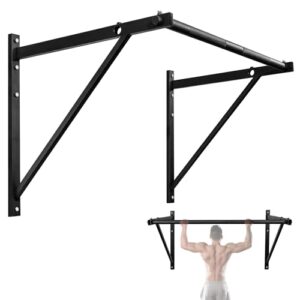A typical strength training session should last between 45 to 60 minutes. Aim to keep your workouts under 90 minutes.
Engaging in strength training can be a crucial part of a balanced exercise routine. Focusing on building muscle, it not only enhances physical appearance but also boosts metabolic rate and supports bone health. Beginners might find shorter sessions of 30 minutes sufficient as they adapt to the demands of weight lifting.
Consistency is key, with multiple sessions per week providing the best results. Tailoring the duration to individual fitness levels and goals ensures you get the most out of each workout without risking overtraining or injury. Striking the right balance in your strength training can lead to significant improvements in both strength and overall health.
Unraveling Strength Training Duration
Questions like “How long should strength training be?” circle in gyms worldwide. Finding the sweet spot for your strength training session can seem like a puzzle.
The Science Behind Time And Muscle Growth
Strength training isn’t one-size-fits-all. Your goals shape your routine’s length.
Research highlights a range of 20-60 minutes as effective. This window offers ample time to trigger muscle growth without overtaxing the body. Short, intense sessions increase strength, while longer ones aid in muscle endurance.
- Warm-up: 5-10 minutes
- Main workout: 20-40 minutes
- Cool-down: 5-10 minutes
Rest between sets matters too. Aim for 30 seconds to 3 minutes, depending on intensity.
Common Myths About Training Length
Let’s debunk some myths:
Myth 1: Longer workouts mean bigger muscles.Intensity outweighs duration. Quick, focused sessions can lead to significant gains.
Myth 2: No pain, no gain.Recovery is crucial. Train smart to avoid injury and see consistent progress.
Myth 3: Daily training speeds up results.Rest days are key. They allow your muscles to recover and grow stronger.
Listen to your body. Combine scientific guidelines with personal experience to determine the best duration for you.
Assessing Your Fitness Goals
Assessing Your Fitness Goals is the first crucial step to determining ideal strength training duration. Individual goals dictate the intensity, frequency, and length of training sessions.
Building Muscle Vs. Maintaining Fitness
Strength training objectives can vary significantly. Some aim for increased muscle mass, others for general health.
- Building muscle often requires heavier weights. Intense sessions last between 45 to 60 minutes.
- Maintaining fitness, however, might involve lighter weights. Sessions are shorter, generally 20 to 30 minutes.
Training Durations For Different Goals
The table below shows typical strength training lengths based on various objectives:
| Goal | Frequency | Duration |
|---|---|---|
| Build Muscle | 3-4 days/week | 45-60 mins |
| Maintain Fitness | 2-3 days/week | 20-30 mins |
| Improve Endurance | 4-5 days/week | 30-40 mins |
| Improve Strength | 2-3 days/week | 30-45 mins |
Remember, individual fitness levels can adjust these durations. Beginners may start with fewer minutes and gradually increase.
Elements Influencing Workout Length
Many factors play a role in how long a strength training session should last. Each individual’s goals, experience, and the chosen workout’s intensity will shape the ideal duration.
Experience Level’s Impact On Training Time
The time spent on strength training can vary greatly depending on a person’s experience level. Beginners often benefit from shorter sessions, allowing their bodies to adapt without excessive strain.
- Newcomers: 30-45 minutes per session to prevent overtraining.
- Intermediate: 45-60 minutes for more volume and complexity.
- Advanced: 60-90 minutes to focus on specific muscle groups and techniques.
The Role Of Workout Intensity
How intense your workout is will significantly affect how long it should be. High-intensity workouts often require less time due to increased effort.
| Intensity | Duration | Focus |
|---|---|---|
| Low | 60+ minutes | Endurance and technique |
| Moderate | 45-60 minutes | Building strength |
| High | 20-30 minutes | Maximal effort, quick results |

Credit: www.puregym.com
Structuring Your Strength Session
Structuring Your Strength Session is crucial for maximizing gains. Proper structure ensures effective workouts. It helps balance intensity, rest, and recovery. A well-planned session boosts progress and reduces injury risks. Let’s dive into structuring your routine for optimal results.
Ideal Timeframes For Warm-up And Cool-down
A proper warm-up kicks off your session. It preps muscles and joints. Aim for 5-10 minutes. Focus on dynamic movements. They raise your heart rate. They also improve joint lubrication. A cool-down eases your body back to resting state. Spend 5-10 minutes here too. Use light stretching or walk to lower heart rate gradually.
Balancing Exercise Types And Rest Periods
Main exercises should vary in your routine. Mix compound and isolation workouts. Compound moves engage multiple muscle groups. Isolation exercises focus on one muscle. Balance is key. Alternate upper and lower body days for full recovery.
| Exercise Type | Reps and Sets | Rest Periods |
|---|---|---|
| Compound | 3-5 sets of 6-12 reps | 1-2 minutes |
| Isolation | 2-3 sets of 8-15 reps | 30-60 seconds |
Rest is vital for muscle recovery. Heavier lifts demand longer rest, 2-3 minutes. Lighter ones or endurance reps need 30-60 seconds. Listen to your body. Rest more if needed.
Integrating Volume And Frequency
Getting strong takes more than lifting weights. It’s about how much and how often you train. The key to unlocking your strength potential lies in the perfect blend of volume and frequency. This guide dives into the nitty-gritty of structuring your strength training effectively.
Calculating Weekly Training Volume
Understanding your weekly training volume is crucial. It’s the total weight lifted during a week. More volume often leads to greater strength. Yet, too much can lead to burnout. Here’s how to calculate it:
- Count reps: Multiply the number of sets by the number of reps per set.
- Weigh your lifts: Multiply the total reps by the weight used.
- Add up: Do this for all exercises to get the weekly total.
Use a training log to track this. Aim for a progressive increase over time for best results.
Finding The Right Training Frequency
Your muscles need time to recover. But wait too long, and you might not see the growth you want. Here’s how to strike a balance:
| Experience Level | Frequency |
|---|---|
| Beginner | 2-3 days a week |
| Intermediate | 3-4 days a week |
| Advanced | 4-6 days a week |
Remember to listen to your body. Rest is as important as training. Mix it up with light days and heavy days for optimal gains.

Credit: www.mensjournal.com
The Short Vs. Long Workout Debate
Strength training: How long should it really take? This question stirs up the fitness world, sparking the short versus long workout debate. Let’s dive into the benefits and ideal scenarios for both approaches.
Advantages Of Shorter Training Sessions
Brevity is key in our fast-paced world, and it stands true for workouts too.
- Time-efficient: Busy schedules meet their match in quick sessions.
- Intensity: Short bursts allow for high-intensity training without burnout.
- Consistency: It’s easier to stick to shorter, regular workouts.
- Focus: Less time means zeroed-in effort on specific goals.
- Recovery: Shorter workouts reduce the risk of overtraining.
These points suggest that squeezing in quick, strategic sessions can yield impressive gains.
When Are Longer Workouts Beneficial?
Sometimes, more is more—especially when it comes to comprehensive strength training.
- Endurance: Long workouts build stamina and fortitude.
- Technique: Ample time allows for refining movements.
- Volume: Increased reps and sets catalyze muscle growth.
- Mental grit: Longer sessions cultivate mental toughness.
- Versatility: There’s space to mix in cardio, flexibility, and balance.
Extended sessions serve well for those focusing on overall development and peak performance.
Recovery: A Critical Component
Recovery is the unsung hero in strength training.
It determines how much muscle you build after a workout.
It influences how strong you feel the next day.
Without proper recovery, your progress hits a wall.
Here’s how training duration impacts recovery and what techniques you can use.
Impact Of Training Duration On Recovery
The length of your workout sets the tone for your recovery.
- Shorter sessions might mean quicker recovery.
- Longer bouts of exercise ask for more rest.
Aches and fatigue signal the need to rest.
This can influence how often you should train.
Recovery Techniques For Varied Workout Lengths
Different workouts need different recovery plans.
| Workout Length | Recovery Technique |
|---|---|
| 30 min or less | Active recovery, like walking |
| 30-60 min | Stretching and hydration |
| Over 60 min | Extended rest, nutrition, sleep |
Remember, quality sleep and good food are always vital.
They help your muscles repair and grow.

Credit: www.healthline.com
Designing A Personalized Training Plan
Want to get stronger? You need a plan that fits just right. Like a tailor crafting a suit, your strength training plan should be made to measure. It’s not about copying what someone else does. It’s about creating a routine that meets your specific goals, availability, and fitness level. Let’s design a plan that makes your muscles tingle with anticipation!
Adjusting Duration Based On Progress
Dialing in the perfect workout length is key. As you get stronger, what worked before might now be too easy. Regularly assess your progress. Feel challenged but not overwhelmed. A proper plan takes into account your strength gains and adapts.
Think of these pointers:
- Start with sessions lasting anywhere between 30 to 60 minutes.
- If muscles recover fast, consider increasing workout time slightly.
- Plateaus mean it’s time to shake things up. Shorter, intense sessions or longer, varied workouts can help.
Incorporating Flexibility In Routine
Your plan must change as life does. Flexibility stops training from feeling like a chore. It keeps it exciting! Stick with your routine by mixing it up.
Suggestions for a flexible routine:
- Swap days if unexpected events pop up.
- Have several workout lengths ready. Shorter for busy days, longer when there’s time.
- Change exercises. If you can’t do one, have a backup plan.
A flexible plan means you won’t miss a workout. Stay on track for those strength gains!
Monitoring And Modifying Duration For Results
Strength training can transform your fitness regime. But knowing how long to lift and rest is key. It’s not about fixed numbers. Listen to your body. Monitor progress. Adjust as needed. Let’s explore how personal feedback shapes effective workout durations for optimal results.
Using Feedback To Tailor Training Time
Track your workouts. Are you seeing progress? If not, maybe it’s time to mix things up. Use a simple journal or a fitness app to note your routines. How does your body feel after each session? Too tired? Consider cutting back a bit. Energized and strong? You might be ready for a longer session. Let’s see how feedback helps to find that sweet spot.
- Record your reps, sets, and weight lifted
- Note energy levels and recovery times
- Adjust rest periods and exercise time accordingly
When To Increase Or Decrease Session Length
Sometimes, more isn’t better—it’s just more. Other times, pushing a bit further sparks growth. Your body gives clues. Notice plateaus or dips in performance? It’s a signal. Maybe up the intensity. Or, pull back for recovery. Small tweaks go a long way.
| Signs to Increase | Signs to Decrease |
|---|---|
| Consistent energy post-workout | Excessive fatigue |
| Steady gains in strength | Plateau or loss in strength |
| Shorter recovery needed | Persistent soreness |
Consider increasing your workout time if your recovery feels faster and gains are visible. Decrease your session length if exhaustion is your constant companion or progress grinds to a halt.
Time Under Tension: Quality Over Quantity
Understanding the length of a strength training workout involves more than watching the clock. It’s about focusing on Time Under Tension (TUT), a crucial element that emphasizes quality of exercise over the quantity of time spent. TUT effectively builds strength and muscle without overstaying in the gym.
The Concept Of Time Under Tension Explained
Time Under Tension refers to how long a muscle is under strain during a set.
A longer TUT signifies a more intense workout for the muscle.
This method improves muscle growth and endurance.
Quality reps with controlled speed beat rapid, less efficient movements.
Applying TUT principles means workouts may be shorter in time but greater in impact.
Reap full benefits by maintaining focus on muscle control, not the workout duration.
Examples Of Time Under Tension Routines
Below are routines that utilize TUT for optimal strength training:
- Slow down repetitions, for example, 4 seconds up, 4 seconds down.
- Implement pauses at the muscle’s peak contraction point.
- Reduce rest time between sets to keep muscles engaged.
Consider these sample TUT workouts:
| Exercise | Tension Time (sec) | Sets | Reps |
|---|---|---|---|
| Squats | 30-40 | 3 | 8-10 |
| Push-Ups | 40-50 | 3 | 10-12 |
| Pull-Ups | 20-30 | 3 | 6-8 |
By focusing on TUT rather than workout length, strength and muscle gains will follow.
Frequently Asked Questions On How Long Should Strength Training Be
How Long Should I Strength Train A Day?
Aim for at least 20-30 minutes of strength training per day, focusing on major muscle groups. Adjust the duration based on fitness goals and experience level.
Is 30 Minutes Of Strength Training A Day Enough?
Thirty minutes of strength training per day can be sufficient if you target different muscle groups and maintain workout intensity. It’s ideal for maintaining fitness and building strength over time.
What Is The Ideal Length Of A Strength Training Session?
The ideal length for a strength training session is typically between 45 to 60 minutes. This timeframe allows for a focused workout targeting multiple muscle groups.
Is 10 Minutes Of Strength Training Enough?
Ten minutes of strength training can be effective if performed intensely and regularly, focusing on major muscle groups. Consistency and progression are key for results.
What’s The Optimal Duration For Strength Training?
Strength training sessions typically range from 30 to 60 minutes, depending on fitness level and goals.
Can Strength Training Be Done Daily?
It is advisable to allow rest days for muscle recovery, limiting strength training to 2-4 times per week.
How Many Exercises Per Strength Session?
Generally, aim for 8-10 exercises targeting different major muscle groups in a single session.
Conclusion
Determining the ideal duration for strength training sessions varies by individual goals and fitness levels. Aim to balance intensity with adequate rest for muscle recovery. Remember, consistent, tailored workouts are key to achieving sustainable strength gains. Always listen to your body and adjust as needed to stay on track for success.
















